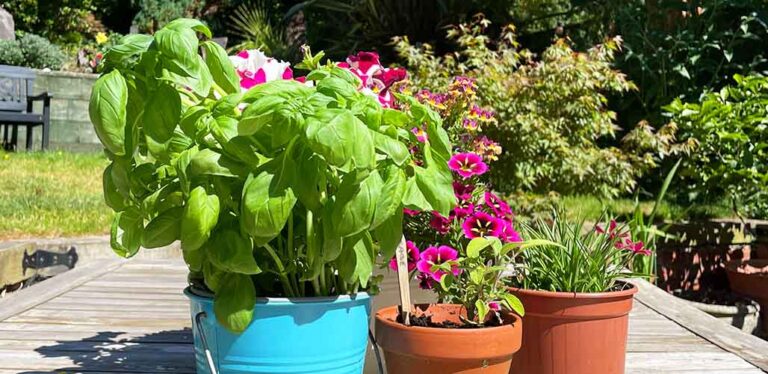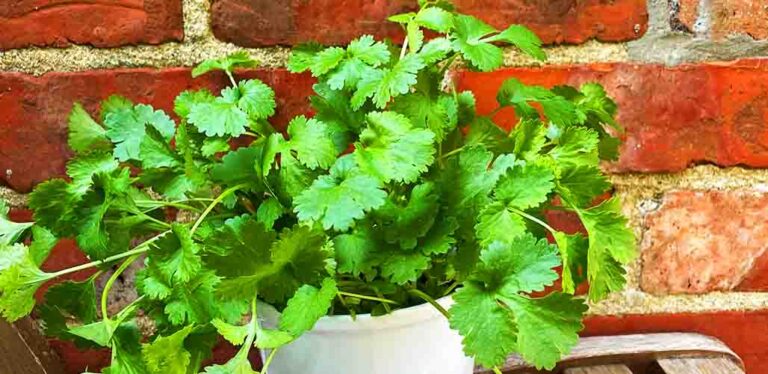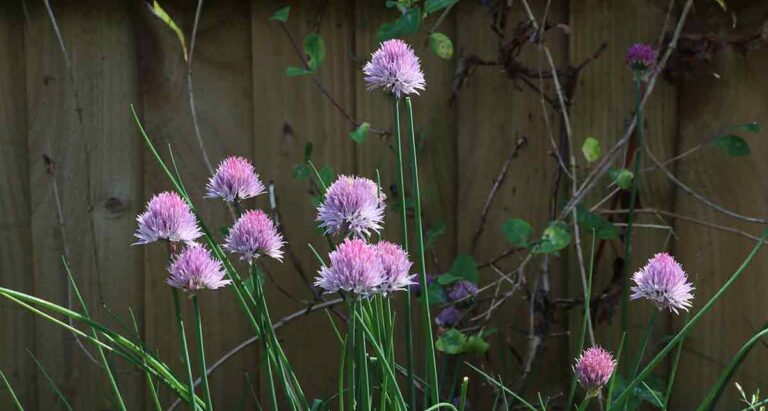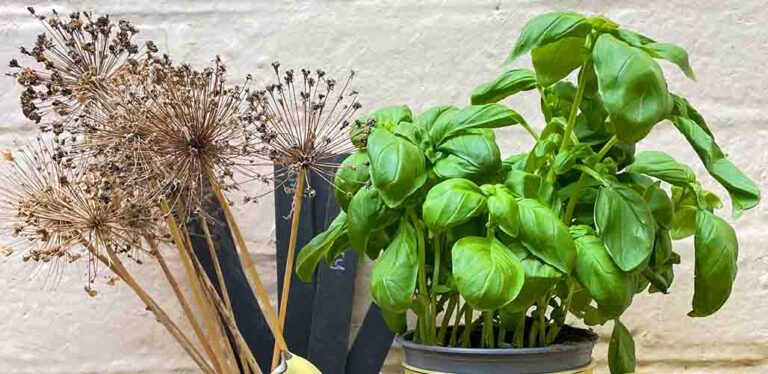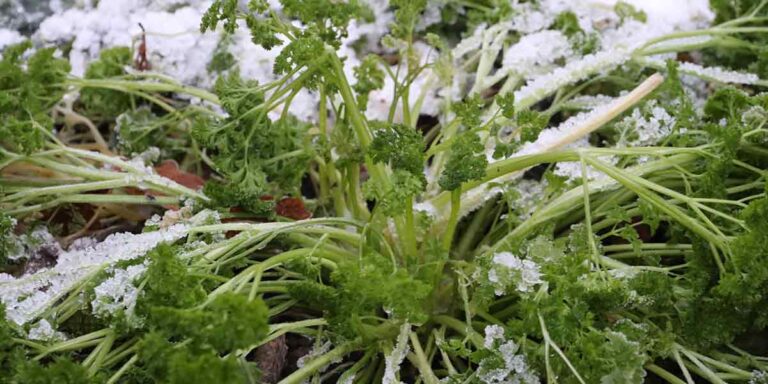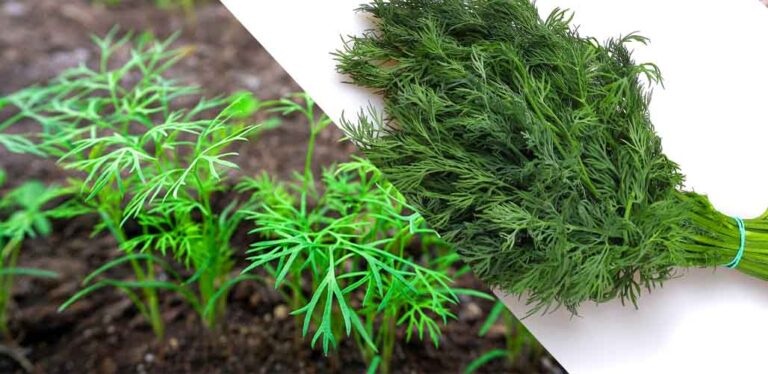Does Basil Flower?

Basil is primarily grown for its famously fragrant leaves. And I’ll be the first to admit that for a long time, it didn’t even occur to me whether it could flower. In fact, the first time one of my basil plants flowered, it was by accident rather than design. I’d gone on vacation towards the end of summer, and when I got back, the now-neglected basil pot on my garden table had produced flower spikes replete with tiny buds. The resulting flowers were very pretty, and a hit with the bees. So now I’ve found three ways to make basil flowers a recurring feature of my garden.
Contents
- Does basil flower?
- When does basil flower?
- Will living basil from the grocery store flower?
- Should you let basil flower?
- 6 basil varieties to grow for their flowers
Does basil flower?
Basil leaves are used to flavor a wide range of cuisines, including Italian, Greek, Indian, and Thai. Basil oil has important spiritual significance to Orthodox Church. And in traditional medicines it is also believed to treat the symptoms of coughs, headaches, diarrhea and skin infections. But in all these contexts, its flowers are distinctly underrated.
Basil plants belong to the Lamiaceae family, along with mint, oregano, lavender and salvias. Just like these cousins, basil plants produce spikes of trumpet-shaped flowers on long stems. Each individual flower is small, but the overall effect is enhanced because there are so many of them.
When does basil flower?
Basil plants produce flower stems in mid to late summer, when the weather is warmest, and the daylight hours are longest. Flower stems covered in buds open from the lowest bud upwards, and each individual flower lasts just a day or so. Following pollination, the petals die back, and the fertilized ovules at their base ripen into seeds.
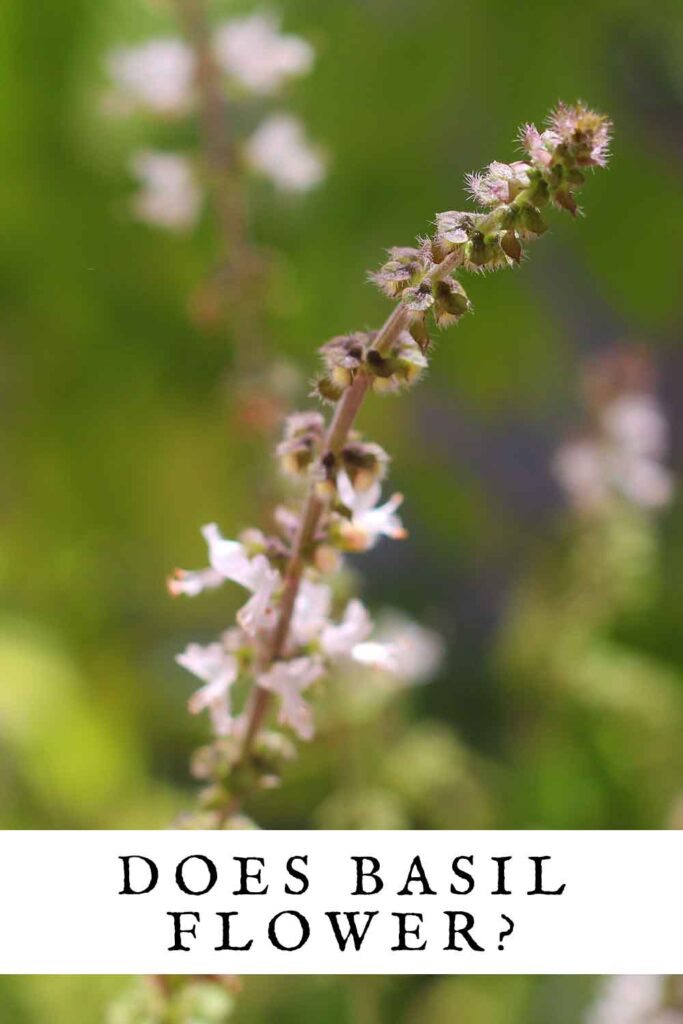
Most basil plants will not flower for as long as you keep harvesting leaves from them. Their lifecycle follows a strict sequence of:
- Putting down roots. By the time a new seedling pokes its head above the surface, a fledgling network of roots is already well established underground.
- Growing foliage. Leaves are the energy-generating power banks which support everything else that follows.
- Flowering. Basil flowers are like the climax of an action movie – exciting, but they means the finale is coming up next.
- Producing seeds. The plant prioritizes putting the last of its remaining energy into producing healthy seeds before the growing season ends.
Picking leaves from the plant to use for cooking keeps it permanently stuck in the foliage stage. The only times you might spot your plant trying to flower are:
- If you don’t harvest very many leaves from it.
- And right at the end of summer, in a last ditch effort to produce seed even though the amount of foliage isn’t ideal.
Will living basil from the grocery store flower?
If you’d like to see your basil plant flower, the best way to start is by growing one from seed, or buying one from a plant nursery. Pots of living basil from the supermarket aren’t actually one single plant. Each pot contains several seedlings which have been grown under artificial conditions, to overcome the problems of overcrowding. If you leave them to keep growing without harvesting, the competition for space, water and nutrients will probably stop them flowering. Or at least, what flower stems they produce will be small and unimpressive. But some people do have success dividing their store bought basil and growing each seedling on in its own pot. This also greatly increases the chances of them flowering.
Should you let basil flower?
Let’s say your basil plant has sent up a rogue flower stem – is it a good idea to let that stem bloom? If you’re growing your basil for tasty leaves, then probably not. When the plant flowers, energy is diverted away from the leaves and into flower and seed production instead. This means the plant takes an altogether less urgent approach to growing new leaves, and production of essential oils in the existing leaves starts to decline. In other words, letting your basil flower means you’ll be left with mostly tough old flavorless leaves from now on.
For this reason, most kitchen gardeners pinch out flowers stems from their basil plants as soon as they spot them. But, letting your basil flower has advantages too:
- The flowers are pretty.
- They’re edible too. Use them to decorate salads, desserts, and summer drinks.
- They attract valuable pollinating insects, like bees, hoverflies, butterflies and moths.
- You’ll end up with seed, which you can save to grow new plants from next year.
The best of both worlds
Here are three ways that I like to have my basil cake and eat it, when it comes to having the best of both tasty leaves, and flowers:
- Succession sowings of sweet basil
- Use annual basil varieties as ornamental plants
- Growing perennial basils
Succession sowing
Succession sowing is a great way to ensure a steady supply of fresh young basil leaves all summer long. Start indoors in early spring, and sow half a dozen basil seeds on the surface of a 4 inch pot of compost. Put the pot in a propagator (or sandwich bag!). Repeat two weeks later, and every two weeks after that until the beginning of summer. Bear in mind that since basil seeds take up to 3 weeks to germinate, the previous pot might not being showing life when you start the next. As each sowing germinates, remove all but the strongest seedling, and nurture it into a plant, which you can harvest the leaves from. When your second plant is ready to harvest from, stop picking from the first plant and let it flower, and so on with the third and fourth, etc.
Ornamental basils
All annual basil varieties are edible, but some of them are so pretty they make a pretty contribution to pots, hanging baskets and flowerbeds too. Especially red and purple-leaved varieties like Red Rubin or Dark Opal, and compact green varieties like Greek basil. Why not grow one for eating, and one for admiring?
Perennial basils
Not a lot of people know that some basil varieties are short lived evergreen perennials. Which means they’ll flower every summer for three to five years before dying off. These shrubby varieties come in a range of sizes, but they all need protection from cold weather. So pick a smaller variety if you’ll need to move yours to a greenhouse or sunroom over winter! Depending on their size, you’ll get dozens or even hundreds of flower spikes per plant.
6 basil varieties to grow for their flowers
If I’ve persuaded you to give flowering basils a go, here are 5 of the best varieties to try.
- Sweet basil. This is the variety most commonly used in cooking, and most often sold in grocery stores. Its flowers are light to deep pink, and relatively unshowy – this variety is all about the delicious leaves! But if you’re only going to grow one type of basil, this has to be the first one you try.
- East Indian basil. Can you believe that East Indian basil is an evergreen shrub which grows up to 6ft tall? It still needs protection in winter, so grow it in a large pot which you can move into a greenhouse or sunroom. Its leaves can be used like sweet basil in cooking, and its dainty flowers are borne on striking furry spikes.
- Lime basil. Lime basil’s leaves are darker green than sweet basil’s, which makes a perfect high-contrast backdrop to their crisp white flower spikes. The leaves have a citrusy perfume – try them with chicken, or pop a couple of bruised leaves into a gin and tonic. If you protect them from frosts, lime basil plants will survive over winter and flower again for 3 or 4 years.
- Purple basil. There are several types of purple basil, which are prized for their ornamental value as well as their taste. Try the award winning Dark Opal variety, developed in Connecticut in the 1950s. Purple basils are the most likely to have reliably deep pink flowers.
- Thai basil. Thai basil flowers are purple or white, but their stand out feature is their dramatic dark purple stems.
- African blue basil. When you see an African blue basil, it’s easy to recognise how they are related to salvias! This compact perennial variety is grown as an ornamental plant more often than a culinary herb. It produces a profusion of long, dainty flower stems in summer and early fall.
Does basil flower – summary
Ever since I first let that basil plant flower by accident, I’ve become a big fan of growing it as an ornamental plant on purpose. And I hope I’ve convinced you to give it a go too! Basil will flower in the warmest summer months, and the flowers are as edible as the leaves. But, the leaves do get less tender and tasty once flower production begins, so if you’re only interested in your plant as an herb, pinch those flower stem right out when they appear!
Are you going to try letting your basil flower? Let us know in the comments box down below.

